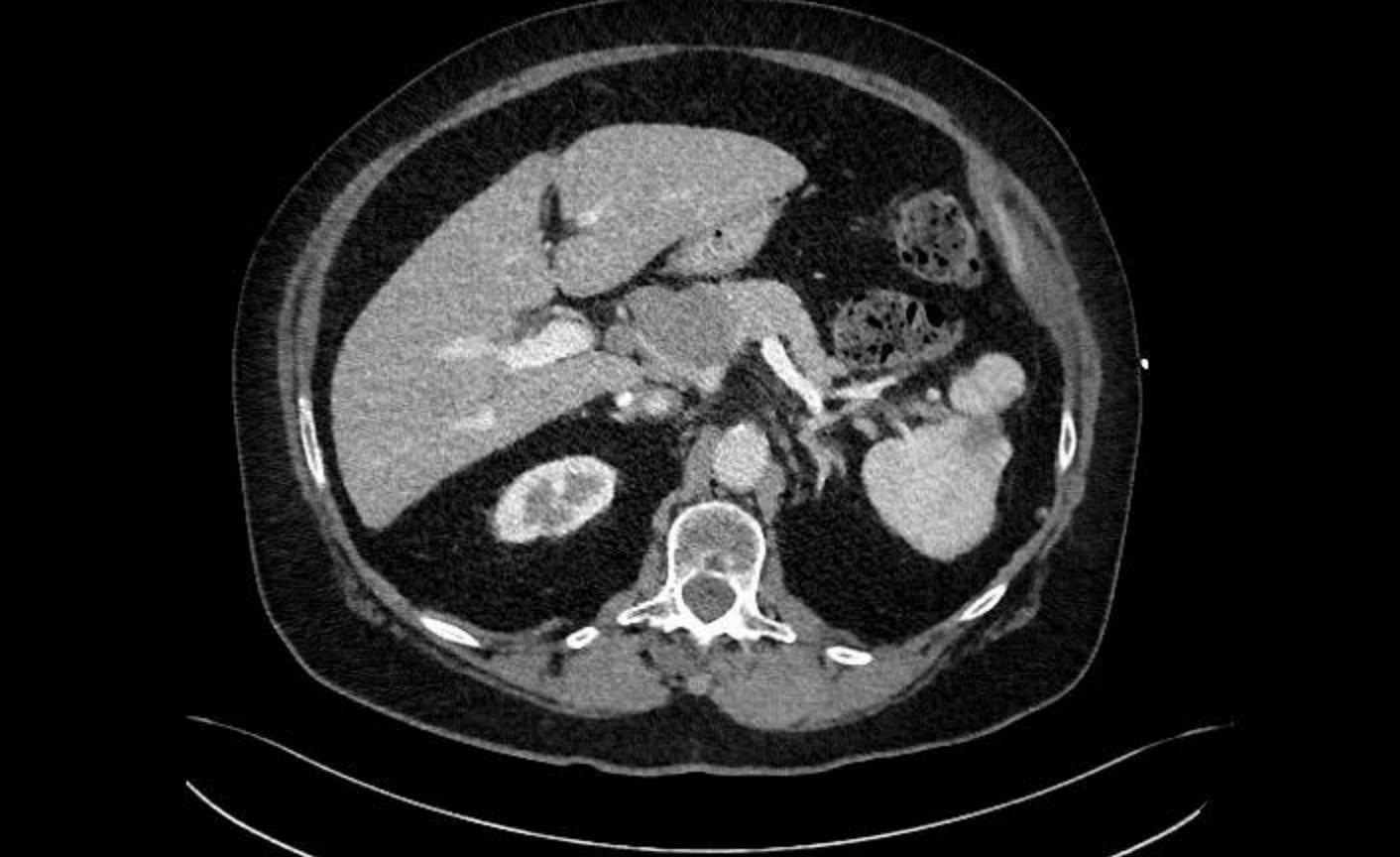Monday Poster Session
Category: Interventional Endoscopy
P3599 - Isolated Periportal Burkitt Lymphoma Diagnosed by EUS-FNA: A Rare Nodal Presentation
Monday, October 27, 2025
10:30 AM - 4:00 PM PDT
Location: Exhibit Hall

Susan Feldman, MD (she/her/hers)
Prisma Health, University of South Carolina School of Medicine
Columbia, SC
Presenting Author(s)
Susan Feldman, MD1, Nelson Gonzales, BS2, Simran Joshi, MD3, Devendra Enjamuri, MD1
1Prisma Health, University of South Carolina School of Medicine, Columbia, SC; 2University of South Carolina School of Medicine, Columbia, SC; 3Yale New Haven Health, Bridgeport Hospital, Bridgeport, CT
Introduction: High-grade B-cell lymphomas (HGBCL), including Burkitt lymphoma (BL), are aggressive non-Hodgkin lymphomas that typically present with extranodal involvement, most commonly in the ileocecal region, jaw, or CNS. In sporadic BL, abdominal disease often affects the GI tract or mesenteric nodes. However, isolated involvement of periportal or para-aortic lymph nodes is exceptionally rare. Studies suggest extranodal involvement occurs in over 80% of cases, making purely nodal presentations unusual and underreported. We present an unusual case of BL in a periportal node without extranodal involvement.
Case Description/
Methods: A 69-year-old woman with a history of known thoracoabdominal aortic aneurysms underwent routine CT imaging in preparation for surgical repair. New-onset abdominal lymphadenopathy was observed with clustered periportal and para-aortic lymph nodes measuring up to 5 cm and no other evidence of primary malignancy. The patient remained asymptomatic and denied constitutional symptoms. She was referred to gastroenterology for tissue diagnosis. EUS with FNA of a periportal lymph node was performed. Pathology revealed EBV-positive high-grade B-cell lymphoma, germinal center B-cell type, with monoclonal lambda-restricted B-cells on flow cytometry. Staging with cerebrospinal fluid and bone marrow biopsy showed no evidence of extranodal involvement. She was initiated on systemic chemotherapy with R-EPOCH, intrathecal methotrexate, and supportive care with rituximab and pegfilgrastim.
Discussion: This case illustrates a rare presentation of high-grade B-cell lymphoma limited to periportal and para-aortic lymph nodes without extranodal involvement. Most cases of Burkitt or Burkitt-like lymphoma present with extranodal disease, often in the GI tract, CNS, or bone marrow. The incidental finding in an asymptomatic patient highlights the importance of evaluating deep nodal lymphadenopathy, even when discovered on routine imaging. Early diagnosis remains critical given the aggressive nature of the disease, and this case adds to the limited literature on purely nodal presentations.

Figure: CT with perihepatic node
Disclosures:
Susan Feldman indicated no relevant financial relationships.
Nelson Gonzales indicated no relevant financial relationships.
Simran Joshi indicated no relevant financial relationships.
Devendra Enjamuri indicated no relevant financial relationships.
Susan Feldman, MD1, Nelson Gonzales, BS2, Simran Joshi, MD3, Devendra Enjamuri, MD1. P3599 - Isolated Periportal Burkitt Lymphoma Diagnosed by EUS-FNA: A Rare Nodal Presentation, ACG 2025 Annual Scientific Meeting Abstracts. Phoenix, AZ: American College of Gastroenterology.
1Prisma Health, University of South Carolina School of Medicine, Columbia, SC; 2University of South Carolina School of Medicine, Columbia, SC; 3Yale New Haven Health, Bridgeport Hospital, Bridgeport, CT
Introduction: High-grade B-cell lymphomas (HGBCL), including Burkitt lymphoma (BL), are aggressive non-Hodgkin lymphomas that typically present with extranodal involvement, most commonly in the ileocecal region, jaw, or CNS. In sporadic BL, abdominal disease often affects the GI tract or mesenteric nodes. However, isolated involvement of periportal or para-aortic lymph nodes is exceptionally rare. Studies suggest extranodal involvement occurs in over 80% of cases, making purely nodal presentations unusual and underreported. We present an unusual case of BL in a periportal node without extranodal involvement.
Case Description/
Methods: A 69-year-old woman with a history of known thoracoabdominal aortic aneurysms underwent routine CT imaging in preparation for surgical repair. New-onset abdominal lymphadenopathy was observed with clustered periportal and para-aortic lymph nodes measuring up to 5 cm and no other evidence of primary malignancy. The patient remained asymptomatic and denied constitutional symptoms. She was referred to gastroenterology for tissue diagnosis. EUS with FNA of a periportal lymph node was performed. Pathology revealed EBV-positive high-grade B-cell lymphoma, germinal center B-cell type, with monoclonal lambda-restricted B-cells on flow cytometry. Staging with cerebrospinal fluid and bone marrow biopsy showed no evidence of extranodal involvement. She was initiated on systemic chemotherapy with R-EPOCH, intrathecal methotrexate, and supportive care with rituximab and pegfilgrastim.
Discussion: This case illustrates a rare presentation of high-grade B-cell lymphoma limited to periportal and para-aortic lymph nodes without extranodal involvement. Most cases of Burkitt or Burkitt-like lymphoma present with extranodal disease, often in the GI tract, CNS, or bone marrow. The incidental finding in an asymptomatic patient highlights the importance of evaluating deep nodal lymphadenopathy, even when discovered on routine imaging. Early diagnosis remains critical given the aggressive nature of the disease, and this case adds to the limited literature on purely nodal presentations.

Figure: CT with perihepatic node
Disclosures:
Susan Feldman indicated no relevant financial relationships.
Nelson Gonzales indicated no relevant financial relationships.
Simran Joshi indicated no relevant financial relationships.
Devendra Enjamuri indicated no relevant financial relationships.
Susan Feldman, MD1, Nelson Gonzales, BS2, Simran Joshi, MD3, Devendra Enjamuri, MD1. P3599 - Isolated Periportal Burkitt Lymphoma Diagnosed by EUS-FNA: A Rare Nodal Presentation, ACG 2025 Annual Scientific Meeting Abstracts. Phoenix, AZ: American College of Gastroenterology.
